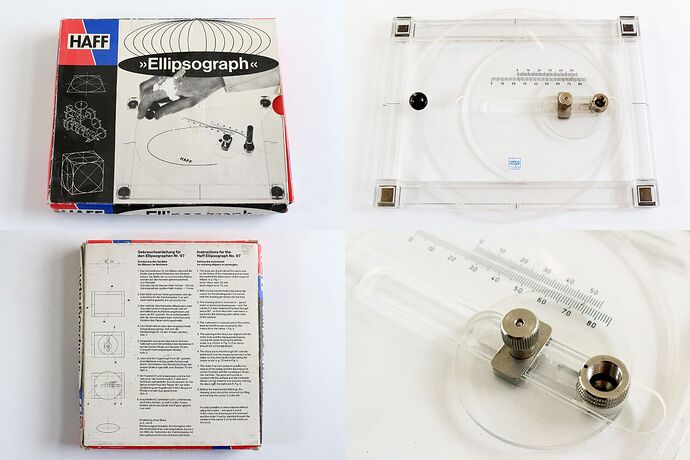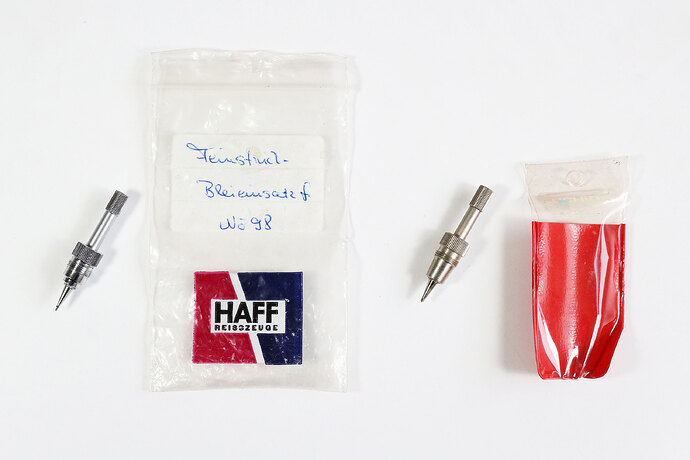Great discovery of the specification behind rotring’s pencil inserts! I’ll try not to drop any spoilers for what comes next, but following an earlier discussion of this topic off-forum I did a bit more research that might help explain why Beisel & Gütig’s patent didn’t stick.
Something very similar had already been the subject of a patent application and Gebrauchsmuster by Thomas Doser, instrument maker of Pfronten, almost a decade earlier in 1974.
This covered the use of a fine-lead mechanical pencil with compasses, drop bows, lettering devices and the like, stipulating a shorter body length (65 to 70 mm) for better handling.
Although the patent drawings show a pencil designed to fit into a special threaded sleeve for use with compasses, the patent text also makes provision for moulding the thread on to the barrel of the pencil itself:
"In a further embodiment of the invention, it is proposed to use a fineliner with a moulded threaded part, which threaded part is located near the writing tip, approximately in the area of the rest of the handle.
The threaded part has an external thread that is adapted to the aforementioned internal thread on the drawing instrument.
This variant of the invention, which avoids the individual screw sleeve and combines it with the fine point pen into a single piece, allows for operation similar to the first variant of the invention described above.
In particular, this embodiment can be combined with the idea of shortening the fine-point pen to a length of approximately 65 to 70 millimetres. A device of this type can easily be combined with a compass, as its dimensions are small enough. Working with a stencil pen is also possible."
It’s pretty clear that the later Beisel/Gütig application would have fallen foul of these specifications. However, it appears that although Doser’s Gebrauchsmuster may been granted, the associated patent application did not proceed.
While it’s possible that there was an even earlier patent for the use of fineliners as compass inserts, I wonder if the real obstacle was Haff’s ellipsograph, the 1972 invention of Willi Gaweji (Gebrauchsmuster/patent).
This was fitted with a socket that accepted standard technical pen points, which the patent specification described as:
“the holder [13] for the drawing insert, e.g. an ink insert, a pencil insert or an insert point”
In practice, the supplied pencil insert was a 0.5 mm fineliner of diminutive proportions, complete with integral thread to fit standard technical pen accessories.
Lead feed was via a knurled twist-advance tailpiece. From a comparison of numerous Haff ellipsographs, I believe the pencil inserts were made for the German firm by Uchida of Japan.
This, in turn, was an incremental update of the 2 mm leadholder insert linked to in the original post, sold by rotring since the late 1960s to accompany their “System Haff” compass, which was also made for them by Haff as its name suggests (the insert was No. 5608, seen at top right in the case below).
So, ironically, rotring’s pencil insert patent may have failed because similar designs had already been in use for years - by rotring!



